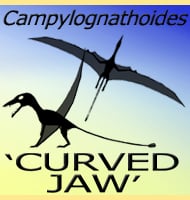Campylognathoides
In Depth Campylognathoides was much like the other basal pterosaurs that flew in the skies of Jurassic Europe. It is also probably that Campylognathoides shared the skies with the well-known pterosaur Dorygnathus as evidenced by the presence of both pterosaurs in the same fossil beds. However, although usually depicted as a fish hunting piscivore, Campylognathoides … Read more
